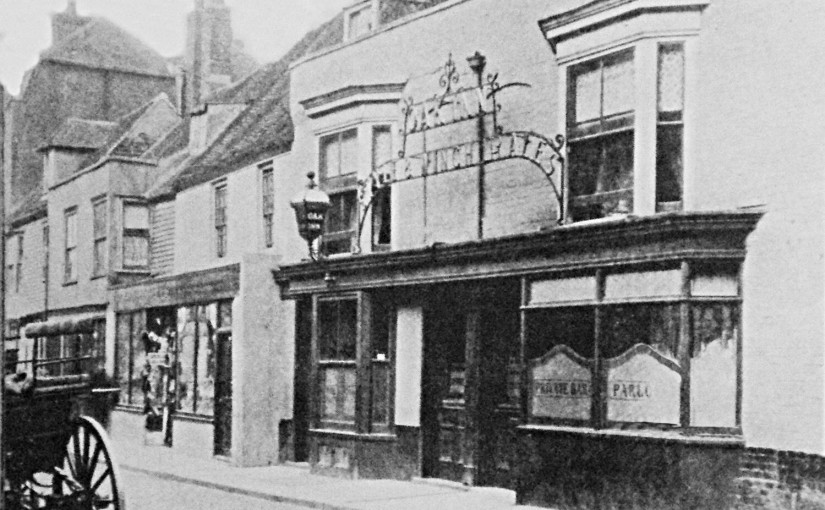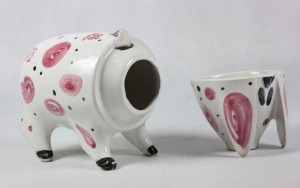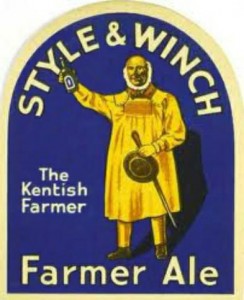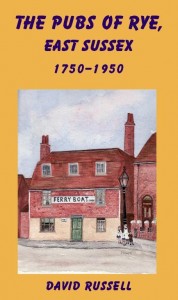The Pubs of Rye no. 3
By David Russell
Very little information has come to light about this fishermen’s beer house located on the High Street. The earliest known date for the Oak is 1870 when Alfred Bourn was the licensee. However, as a beer house, we can be fairly certain it was in existence well before then, and possibly dated back to the 1830 Licensing Act. The house was then known as the Pig and Whistle.
Pig and Whistle is a stereotypical name for the traditional English pub, but oddly enough there are or were few actual genuine pubs with this name in the country. I quote the Dictionary of Pub Names by Dunkling and Wright. ‘When Lillywhite examined 17,000 London pub signs in the 19th century, he was unable to find a single example of Pig and Whistle. He estimated that ‘in the 1980s about 10 British pubs were so called’. Thus it would seem that the Pig and Whistle, Rye had an unusual name.
The Oxford English Dictionary gives several examples of the use of the phrase ‘pigs and whistles’ dating from 1681. To go to ‘pigs and whistles’ at one time meant ‘to go to rack and ruin’. If going to pigs and whistles was going to ruin, and constantly going to the pub was also going to ruin, then pigs and whistles would be associated sooner or later with the pub. From there it would be a short step to naming a pub the Pig and Whistle, first as a nick-name, then as an official name.
We can also speculate on another theory, that the origin of the name might well have been a very local one: the Sussex Pigs of Rye Pottery! It is known that the famous Rye Pottery Sussex Pig was in use as a drinking vessel for more than 200 years. The pig was hollow and came apart. The head could be removed and would stand alone, on its snout and ears, as a cup or mug. The body of the pig set upright could be used as a jug. According to the Sussex County Magazine it was a Rye tradition at weddings for guests to drink a ‘hogs head’ of beer in one, when toasting the bride and bridegroom. This tradition is dated to the mid-19th century when the Pig and Whistle in the High Street must have been a thriving beer house.
Yet another origin of the name, one favoured by bar room etymologists, is found in religious mythology. ‘Pige-Washael’ was once upon a time believed to be the angel’s salutation to the Virgin Mary, which, in the language of the Danes meant ‘Virgin Hail’ or ‘Health to the Maiden’.
Meanwhile back at the Oak Inn, Thomas Osborne held the licence in 1881, and sought permission of the magistrates at the Brewster Sessions to change the name ‘Pig and Whistle’ to the ‘Oak Inn’. This change was readily agreed, but created some amusement on the bench as ‘Oak Inn’ was regarded to be a pretentious name for a simple beer house. However, as far as is known, Thomas Osborne never applied for a full licence and appears to have been content with beer house status.
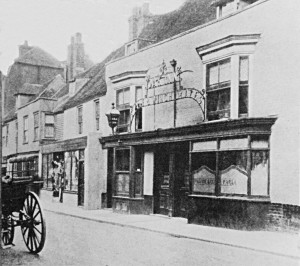
This remained the case until the last and final landlord, George Collyer, ran the premises from 1900 to 1909. Collyer, originally from Ramsgate, took the licence of the Oak Inn five years after leaving the Royal Engineers in 1895.
The final description of the Oak Inn beer house was a sad and poignant one. When the Oak was finally referred for closure in 1909 the owners, brewers Style and Winch Ltd of Maidstone, didn’t even bother to turn up to the hearing, and the Oak Inn went to the wall. This is the report in full:
THE OAK INN
The owners of the Oak Beerhouse were not represented, and the tenant, Mr C A Collyer, appeared in person.
The Superintendent’s report on the house was as follows:—The Oak Beerhouse is situated in the High-street, and is two houses thrown into one. There are three entrances from High-street; one opens into the public bar, one into the bottle and jug department, and one into the private bar; and on one side of the private bar is a bar parlour, access to this being gained from the private bar. A public tap room is situate at the back of the bar, and in addition there is a kitchen and scullery on the ground floor. There is also a public entrance from the Undercliff, with a sign board above, by which access is had to the back of the house from the Salts, etc, below, through the back yard, where [there] is a w.c. and public urinal. A private entrance to same yard is gained by way of Ockman’s Lane. The upstairs accommodation is eight bedrooms and a sitting-room. Lodgings are let to working-men. The nearest licehouses are the Union Inn and the George Hotel; the former is 76 yards from the Oak, and the latter 100 yards, and the house has a frontage of 37½ feet.
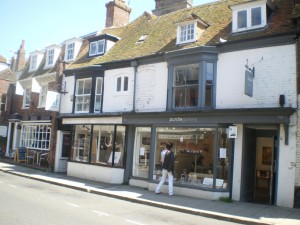
Sergeant Verrion corroborated the statements in the report, and said he had no complaints to make as regard the conduct of the house because there was practically no trade. It was a house that was rarely visited by the police, because there was not very often anyone in there. The fishing class of people patronised it, but not many of these. There was accommodation for the fishing fraternity in the Union Inn. He did not consider the house was wanted. The people who lived in the immediate neighbourhood did not visit it. The house was managed during the day by Mrs Collyer, while her husband went to work.
C A Collyer, the licensee of The Oak, said he had been there nine years come June. He had had a lot of expense with his wife’s illness and trying to keep a respectable house, but the people would not go there, because they were seen. It was too public. The trade might increase if the rougher class were admitted. He let for lodgings, and had ten beds. He had had eight soldiers billeted on him when they had been through. He sold a barrel and a half a week. He did not get a living by the house. If he took in all sorts of lodgers he might get a living but he took in the working class. He had got two permanent lodgers now.
The Decisions
After a short retirement of the Bench, the Mayor said the licence of the Oak would be referred.
After being referred to the Compensation Authority, £254 was granted to the brewers Style and Winch for the loss of their beer house although they were obviously glad to be rid of it, and compensation of £60 was granted to landlord George Collyer for the loss of his licence.
From The Pubs of Rye, East Sussex 1750–1950 by David Russell.
This book, illustrated with around 100 photographs, is in paperback, published October 2012, 282 pages, price £13.99. It can be purchased at Martello Bookshop, Adams of Rye, Rye Tourism Information Centre, Rye Heritage Centre and Waterstones in Hastings. It is also available at www.hastingspubhistory.com, by email: [email protected] or phone 01424 200227.
“Rye’s Own” March 2013
All articles, photographs and drawings on this web site are World Copyright Protected. No reproduction for publication without prior arrangement. © World Copyright 2015 Cinque Ports Magazines Rye Ltd., Guinea Hall Lodge Sellindge TN25 6EG
